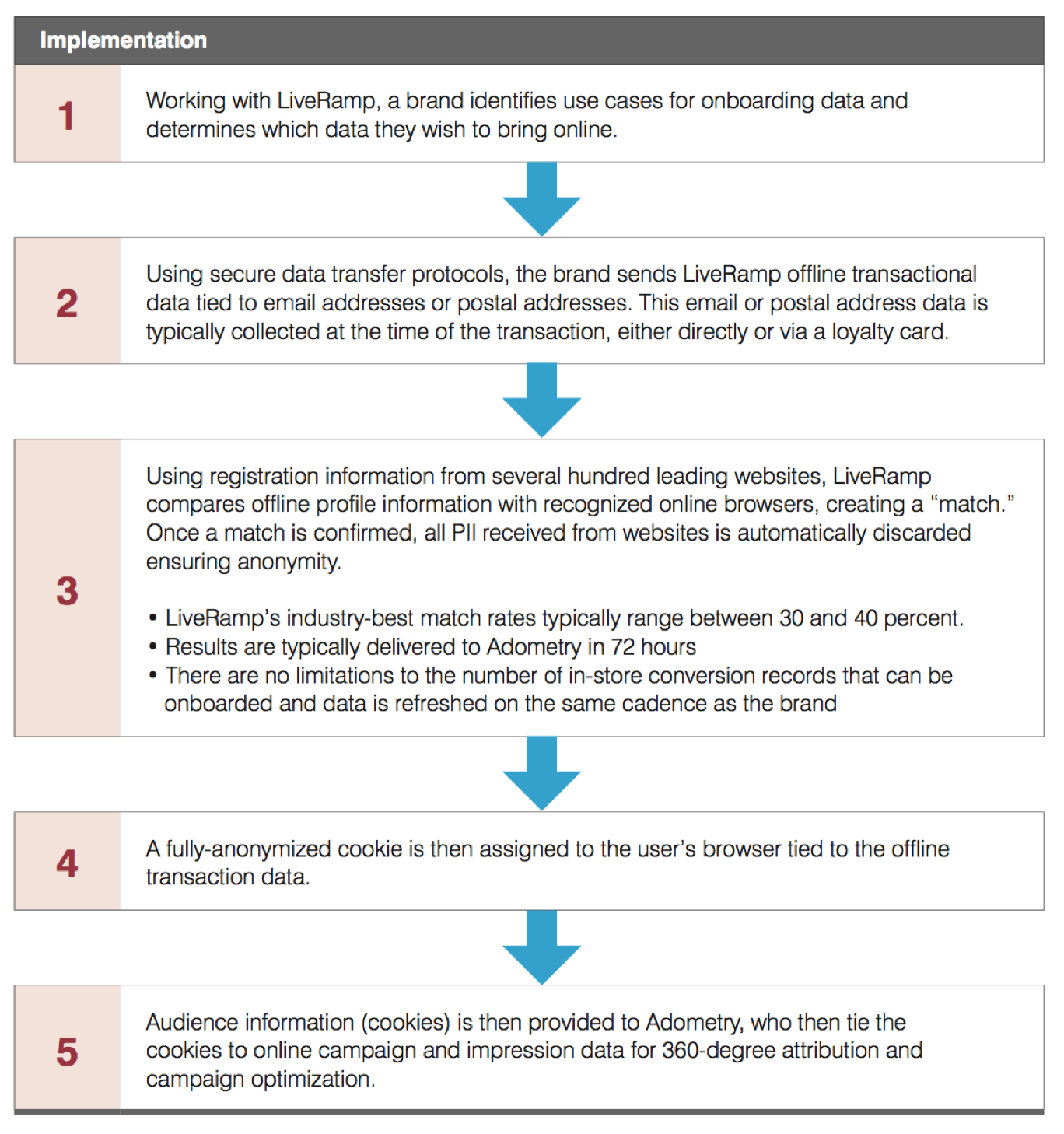When you make an ad on Twitter (which anyone with an account can do) you’re given the option to target users based on their “interests” and “behaviors”. The “interest” categories are derived from user activity on the network, with Twitter automatically taxonomizing you by analyzing who you follow, what you tweet about and retweet, what you like, and so on. The “behavior” categories, on the other hand, rely on information from external organizations like Datalogix (now owned by Oracle), IXI, TransUnion, Epsilon, and Acxiom — data-brokerage services that track your online activity outside Twitter, as well as your offline real-world activity. By linking internal and external sources — a practice known in the adtech industry as “data onboarding” — Twitter is able to tag its users with categories provided by the data brokers.
The exact process of data onboarding will vary by organization, but it always involves matching offline to online activity via some bit of personally identifiable information (also known as "PII"), frequently an email address.

Once data sets are linked, marketers can then target precise user segments based on different concatenations of demographic terms, like "trendy moms" or "Christmas restaurant goers".
By scraping Twitter’s ad creation page I was able to produce a full list of all user segments, their names, descriptions and user count: a taxonomy of human beings according to Twitter and its data brokers. I’ve sorted the list by user count and included it below.
| Size | Description |
|---|---|
| Size | Description |
Download the full dataset as a CSV or JSON file, or see what categories Twitter thinks you belong to here.
Using this list I wrote a program, “The Infinite Campaign”, that automatically generates and posts an infinite series of video ad campaigns. The script randomly selects two behavior categories and one interest category from the ad creation page. It rephrases the descriptions of the categories, putting the statements in the second person. The Infinite Campaign then overlays those statements on top of automatically selected stock footage. Finally, it logs me in to Twitter, uploads the video, and auto-generates a new ad campaign, targeting the same behavior and interest categories used to generate the video. (I’ve limited each campaign budget to $1.)
The end results are portraits of Twitter users generated according to the fantasies by which Twitter understands us.

Loading
